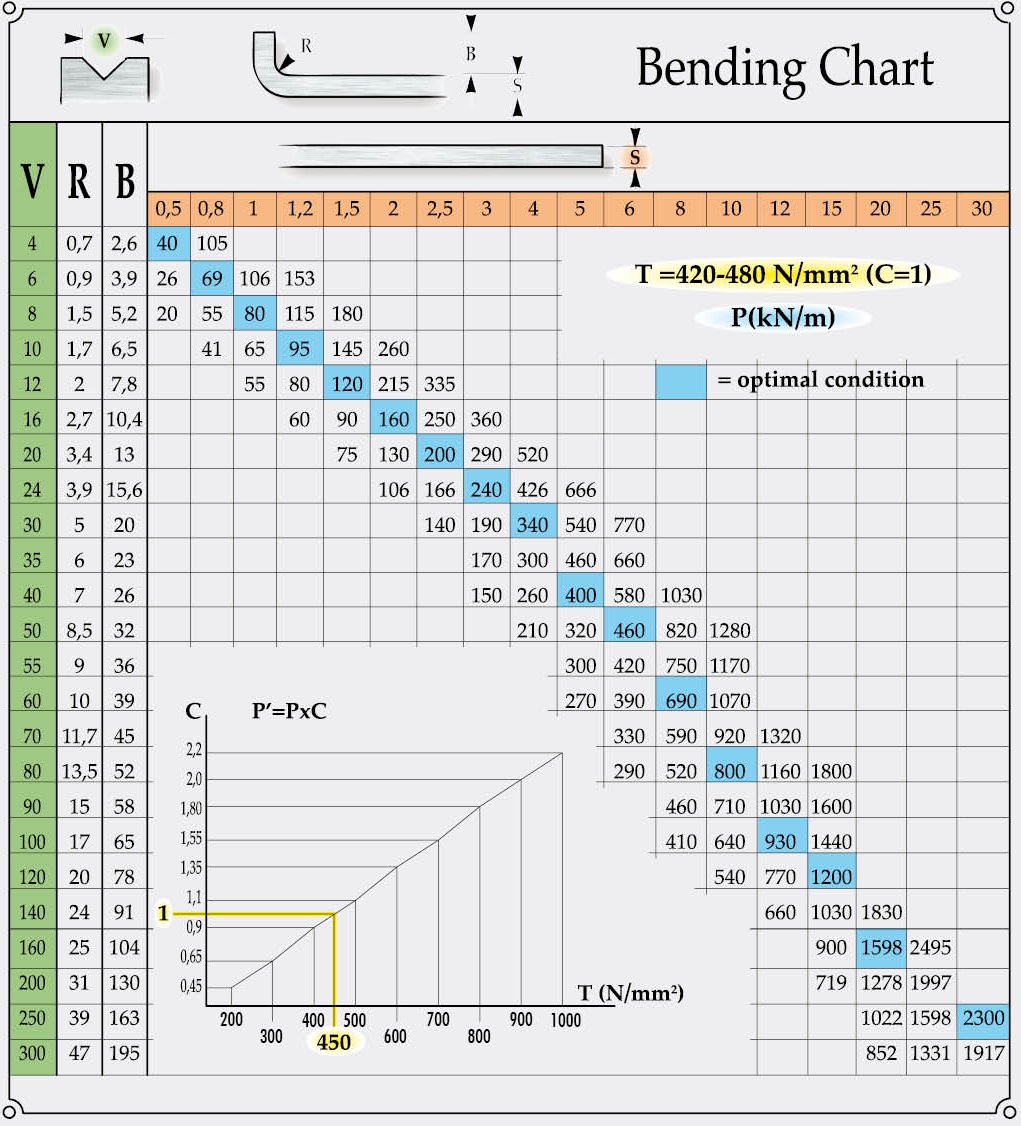

Note the two factors shown in the bend allowance formula: 0.017453 and 0.0078. Toward the inside surface, causing the elongation. Again, the neutral axis goes through no physical change structurally or dimensionally. This means that the neutral axis moves from the center of the material to a location 0.027 in. If you multiply the material thickness by the K-factor (0.446), you get the location of the relocated neutral axis: for example, 0.062 × 0.446 = 0.027 in. There are other values for stainless and aluminum, but in most cases, 0.446 This K-factor is applied as an average value for most bend allowance calculations.

In Machinery’s Handbook, the K-factor for mild cold-rolled steel with 60,000-PSI tensile strength is 0.446 inch. The length of the neutral axis is calculated as a bend allowance, taken at 50 percent of the material thickness. Sheet Metal Bending CalculationīA = × Bend angle, which is always complementary Material is being expanded on the outside than is being compressed on the inside. As the neutral axis shifts toward the inside surface of the material, more Along the neutral axis, nothing is changing-no expansion, no compression. On the outside of the neutral axis the material is expanding on the inside of the neutral axis the material is compressing. The neutral axis is an area within the bend where the material goes through no physical change during forming. This because the neutral axis shifts closer to the inside surface of the material. Technically, the metal does neither, but instead elongates. Many will say material “grows” or “stretches” as it is bent in a press brake. The final formed dimensions will be greater than the sum total of the outside dimensions of the part as shown on the print-unless some allowance for the bend is taken into account.

When a sheet metal part is bent, it physically gets bigger. Figure 1: The bend allowance calculation always uses the complementary angle.


 0 kommentar(er)
0 kommentar(er)
